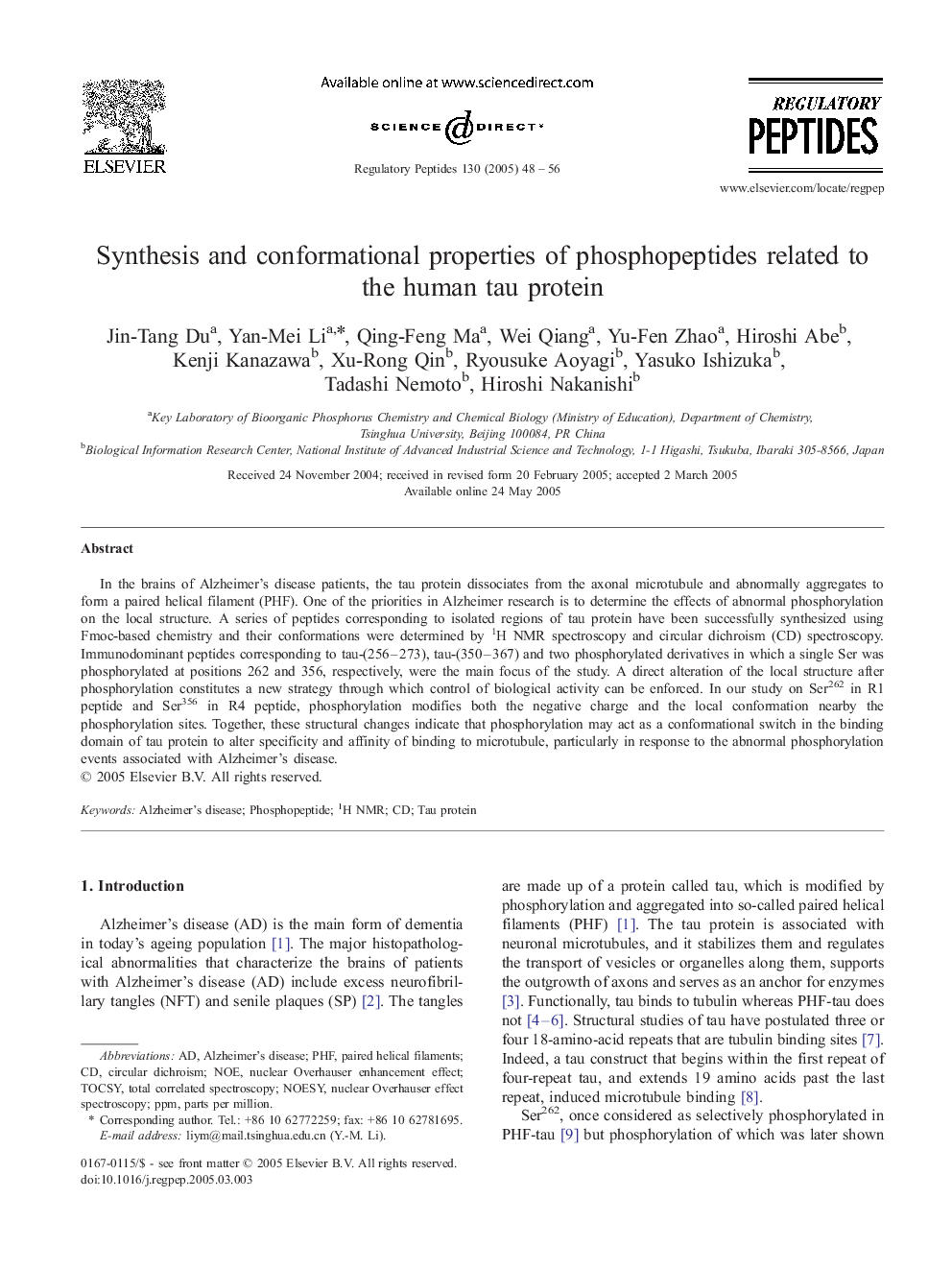| Article ID | Journal | Published Year | Pages | File Type |
|---|---|---|---|---|
| 9894391 | Regulatory Peptides | 2005 | 9 Pages |
Abstract
In the brains of Alzheimer's disease patients, the tau protein dissociates from the axonal microtubule and abnormally aggregates to form a paired helical filament (PHF). One of the priorities in Alzheimer research is to determine the effects of abnormal phosphorylation on the local structure. A series of peptides corresponding to isolated regions of tau protein have been successfully synthesized using Fmoc-based chemistry and their conformations were determined by 1H NMR spectroscopy and circular dichroism (CD) spectroscopy. Immunodominant peptides corresponding to tau-(256-273), tau-(350-367) and two phosphorylated derivatives in which a single Ser was phosphorylated at positions 262 and 356, respectively, were the main focus of the study. A direct alteration of the local structure after phosphorylation constitutes a new strategy through which control of biological activity can be enforced. In our study on Ser262 in R1 peptide and Ser356 in R4 peptide, phosphorylation modifies both the negative charge and the local conformation nearby the phosphorylation sites. Together, these structural changes indicate that phosphorylation may act as a conformational switch in the binding domain of tau protein to alter specificity and affinity of binding to microtubule, particularly in response to the abnormal phosphorylation events associated with Alzheimer's disease.
Keywords
Related Topics
Life Sciences
Biochemistry, Genetics and Molecular Biology
Biochemistry
Authors
Jin-Tang Du, Yan-Mei Li, Qing-Feng Ma, Wei Qiang, Yu-Fen Zhao, Hiroshi Abe, Kenji Kanazawa, Xu-Rong Qin, Ryousuke Aoyagi, Yasuko Ishizuka, Tadashi Nemoto, Hiroshi Nakanishi,
